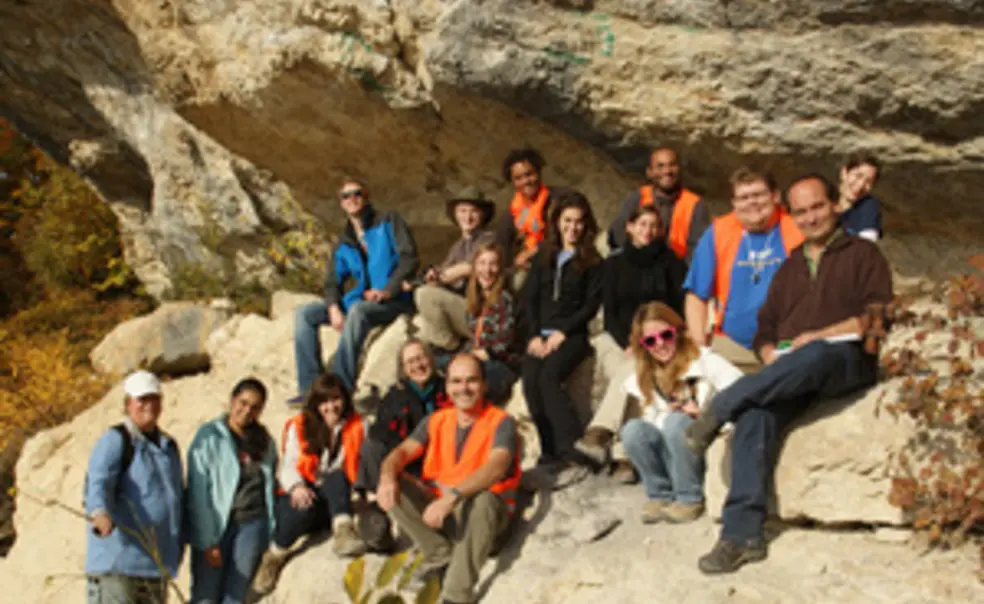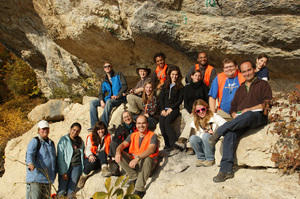Finding global history in Alpine rock formations
[
Usually Keller takes her classes to study the geology of North African countries, but the demonstrations and protests of the Arab Spring forced her to go elsewhere this year. Collaborator and friend Thierry Adatte, a professor at the University of Lausanne in Switzerland, offered to take our class instead on an educational journey from Geneva down to the Mediterranean Sea in Cassis, France. Inviting along Annie and Hubert Arnaud, experts on the regionâs geology, to help him teach, Adatte aimed to expose us to ancient changes in the environment on both small and large scales. We spent the week traveling by van through the fall foliage of the French countryside, stopping where parts of an ancient oceanâs history could be seen on land. We trekked through several outdoor classrooms in the regions around the French and Swiss Alps â from the quarries to tunnels carved through limestone mountains and on to the grassy hills of southern France and a pebbly Mediterranean beach. For graduate student Paula Mateo, studying geology in the field this way is a process of learning through an accumulation of experience. âStill today, I remember everything about the field trip,â she said. â[Going into the field] is the easiest way to learn and remember.â Tracing these carbonate platforms for a week across southern Europe not only helped course concepts sink in, but it also brought to our attention things we wouldnât have noticed before seeing them on the trip. âI realized how much Iâve passed up in past field trips,â geosciences major Nathan Mathabane â13 said. Andrew Budnick â13, who has traveled with geosciences classes every semester since arriving at Princeton in 2009, said that thereâs a unique thrill that comes along with these trips. âItâs so much easier to understand something,â he explained, âwhen you have to figure it out in the field for yourself.â
Emily Trost â13 is a geosciences major from Huntingdon Valley, Pa.













No responses yet